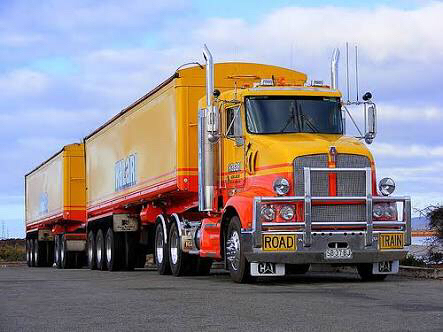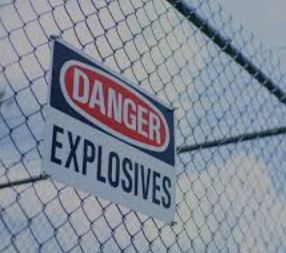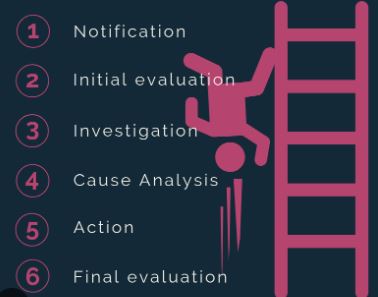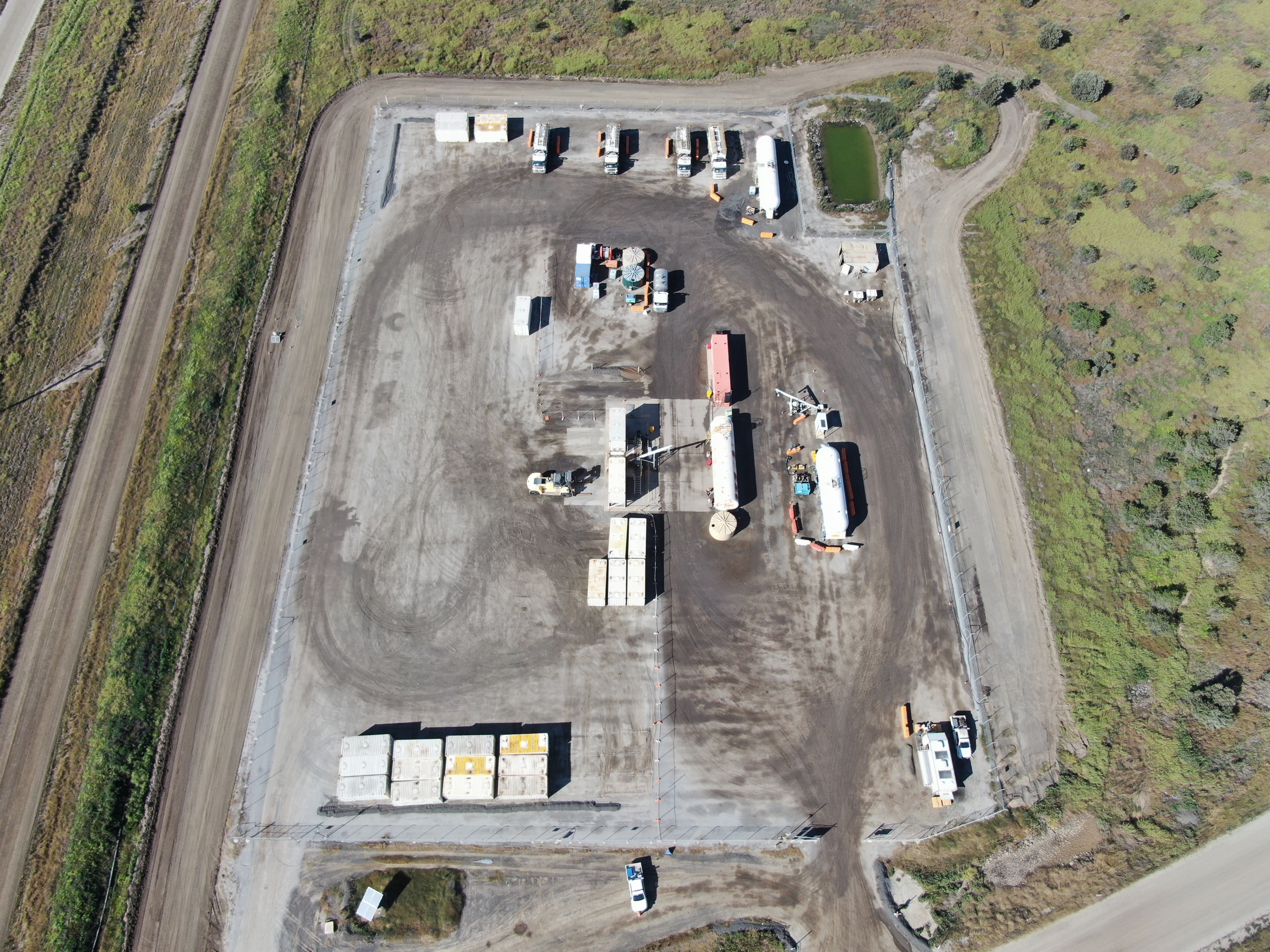Title Page
-
Name of Drill Pattern:
-
Bench Inspection Original Inspection Date:
-
Inspection Initiated By:
-
Who has mine planning defined as accountable for completion of the drill prep area? Ensure request this from mine planning or review planning documents.
DATE OF CURRENT INSPECTION REPORT
-
Periodic Report Date
-
Lead Inspector at time of this report
-
Other personnel included in inspection at time of this report
- Steven Crowdey
- Dwayne McCarthy
- Skye Davis
- Travis Zealey
- Kyle Jeppesen
- Garry Dent
- Daniel Rolston
- Priscilla Wilesmith
- Other
-
Who else was at inspection?
SRF SCHEDULE
-
The SRF schedule is title M01 or M02 for example. M01 is July and M02 is August. Aligns to months in financial year
-
Dig Unit expected to leave area in SRF Schedule so drill prep can commence
-
Survey Pick Up. Note this is 2 days prior to drilling schedule in SRF.
-
Drilling Dates in SRF Schedule
-
Loading Dates in SRF Schedule
-
Blast Dates in SRF Schedule
-
What equipment will be walking into the dig/push and what date is the area planned to require this area?
-
Ensure you are a member of the DL-COL-BMA-DNM-SRF distribution emails. Use the SRF lock in for the Month you are auditing in.
CURRENT SCHEDULE AND CAPTURE OF CHANGES
-
This is the section for the weekly plan schedule to compare to SRF schedule. Please date commentary so we can see changes over the weekly plans or commentary.
-
Dig Unit expected to leave area so drill prep can commence
-
Survey Pick Up. Note this is 2 days prior to the drilling scheduled start date.
-
Drilling Dates as per the weekly plan
-
Loading Dates as per the weekly plan
-
Blast Dates as per the weekly plan
-
What equipment will be walking into the dig/push and what date is the area planned to require this area?
-
Any additional commentary to note on schedule changes and impact to other departments from the weekly planning interactions meeting.
-
Use the weekly plan sent to distribution list DL-COL-BMA-DNM-Weekly Plan for the week you are auditing in
IMPORTANT PLANS & DRAWINGS
-
Please attach photo of drill prep plan
-
Please attach photo of drainage plan
-
Please attach photo of spon com register
-
Please attach photo of 200m equipment exclusion ring
-
Please attach Cultural Heritage Plan of Area
-
Please advise Permit to Disturb applicable to the area
-
Permit to Disturbs receive from Paul Statham. Cultural heritage plans, Infrastructure and spon com registers are from Concepts. Drainage plans and drill prep plans are in weekly plans.
INSPECTION
-
ACCESS TRACK SURFACE CONDITIONS - Surface Condition <br>Is bench safely accessible for water/service trucks (min 10m width)
-
ACCESS TRACK SURFACE CONDITIONS - Graded and be of a camber/cross fall in accordance to site standard allowing light and medium vehicles to access the area safely
-
ACCESS TRACK INTERACTIONS - Has the access track onto the bench been constructed to allow limited interaction with other operations? Use back roads where possible.
-
ACCESS CONTROLS - Have physical hard barriers been established for the bench and access only via designated entrance points?
-
ACCESS CONTROLS - Are there shovel cables or cable trees that run through the access or anywhere that the float may have to interact with or drills have to walk through/over?
-
ROADS/RAMPS - Where ramps exist, are they constructed no greater than 10% grade? Use device to confirm.
-
INTERSECTIONS - Are all intersections constructed as 'T' intersections providing 90 degree angle of approach? Intersection must be in compliance with DNM-CHL-0013 (checklist for intersection design and construction available on tempo).
-
DROP OFFS/OPEN EDGES - Have all drop-offs/open edges greater than 0.5 m been adequately bunded at the correct height? Ensure you consider risk to service trucks, MPU's, Water trucks if brakes were to fail on slopes. Ensure bunding correct height for the equipment that will come in after drilling process.
-
FACE/CREST BUNDING - Has bunding at the face been pushed to the safest limit (half the wheel height of the largest vehicle accessing the area) as close to the crest as possible and at correct height for equipment entering areas?)
-
GENERAL BUNDING - Does bunding contain large rocks that could roll down and land on blasting accessories?
-
DRAINAGE - Is adequate drainage on the bench in preparation for a rain event to prevent water pooling across the floor? (Please ensure the mine planning drainage plan is used in this discussion).
-
GEOTECHNICAL - Are all geotechnical hazards controlled by adequate bunding and exclusion zones are in place?
-
BENCH SURFACE CONDITIONS - Has bench been prepared to an acceptable standard (graded off excessive loose material, grader rills, rocks cleared and low spots identified)
-
PUMPS & PIPELINES - Have all pumps and pipelines been removed from pattern or relocated to an agreed area where potential damage to holes can be minimised? Include pipeline flow meter risk for flyrock. Ensure notifications are raised where required.
-
CABLES & TOWERS - Have all Cables been removed from pattern or relocated to an agreed area where potential damage to holes can be minimised? Ensure notifications are raised where required.
-
TECHNOLOGY & AH - Have all AH trailers and gates been removed from pattern or relocated to an agreed area where potential damage to holes can be minimised? Ensure notifications are raised where required.
-
INFRASTRUCTURE - Have all Infrastructure been removed from pattern or relocated to an agreed area where potential damage to holes can be minimised? Ensure notifications are raised where required.
-
DESIGN - Has design been completed and have limit pegs, tape and minestar limits been placed to provide clear instruction to execute works.
-
ENVIRONMENT - Has a permit to disturb been executed and do all operators understand the required controls. Keep permit to disturb in cab of disturbance vehicles on required patterns
-
LIMITS - Have bench limits been met, has survey checked area to ensure design limits have been achieved for next process
-
BENCH CONDITION: Does the bench contain rocks that may roll ankles on the bench in drill and blast walking.
-
The bench needs to be sheeted to remove this hazard?
-
DUST MANAGEMENT - Has floor been graded off or sheeted where high dust generation exists?
-
DUST MANAGEMENT - Has the sequencing of activities been done as to ensure that activities do not cause dust concerns for the next process. Has interactions with other areas been discussed surrounding dust management.
-
SPON COM - Is there a spon com risk in this pattern?
-
Gas Monitoring is required. Ensure all personnel involved with pattern have gas monitoring training.
-
CRIB HUT - Is there suitable location for crib hut with turn around room? Does further notifications to mine services need to occur or mine planning design need to occur.
-
FLOAT - Is there sufficient room to load and unload equipment with the float? Does further notifications to mine services need to occur or mine planning design need to occur.
-
FLOAT - Identify the float route to the pattern. Is the float route adequate and does it interact with any hazards. ie. Cable towers or cable routes
-
CABLE PLAN - Review the cable plan prior to drilling to ensure that there have been no changes in the cable path or position that may interact with the drill and blast area or the access to the areas (float access or drill/blast access to be thought about)
-
WATER - Is there water in front of the shot or around the shot that needs to be signed off by geotechnical team to fire into water or have assessment of blasting
-
Have you made contact with the mine planning/ geotechnical teams in regards to this water?
-
OTHER HAZARDS - Are there any other hazards not identified in the above sections that require additional controls?
RISK ASSESSMENTS & CONTROLS FOR NON-COMPLIANCE TO DRILL PREP STANDARD
-
Is there any non-compliance to the drill preparation standard as outlined in this inspection
-
Ensure all non-compliances to standard have suitable controls in the drill supervisor bench handover document. Document where controls have been listed or advised to CMW's working in the area.
-
No JSA required. Add comments if required.
-
Is there any equipment within the 200m equipment exclusion zone? Specify what equipment is within the zone during this inspection.
-
Is there any equipment that will remain within the 200m zone when blasting commences?
-
Complete appropriate risk assessment for equipment in zone. Most internal equipment can be signed off by asset owner on email. Higher risk internal equipment like Fuel farms and powerlines must have a JSA (EEM signature for powerlines & Infrastructure signature for fuel farms). External infrastructure must be risk assessed.
-
No Risk assessment required as assessed under this report
INFORMATION FOR NOTIFICATION REQUIREMENTS
-
MINE SERVICES - PUMPS, PIPELINES & FLOW METRES
-
MINE SERVICES - ASSISTANCE BENCH PREPARATION OR DRAINAGE
-
MINE SERVICES - AH TRAILERS OR AH GATES
-
INFRASTRUCTURE - ELECTRICAL ISOLATIONS
-
INFRASTRUCTURE - AH TRAILERS OR AH GATES
-
INFRASTRUCTURE - BUILDINGS/STRUCTURES
-
TECHNOLOGY - AH TRAILERS OR AH GATES
-
RF PLANNING - MINE PLANNING NOTIFICATIONS FOR COMMUNICATION TRAILERS/DEVICES
-
OTHER NOTIFICATIONS
PERIODIC SIGN OFF, SIGN EACH INSPECTION FOR ATTENDEES
-
PERIODIC INSPECTOR
-
PERIODIC INSPECTOR
-
PERIODIC INSPECTOR
-
PERIODIC INSPECTOR
-
PERIODIC INSPECTOR
-
PERIODIC INSPECTOR
-
PERIODIC INSPECTOR
-
PERIODIC INSPECTOR
-
PERIODIC INSPECTOR
-
PERIODIC INSPECTOR
-
PERIODIC INSPECTOR
-
PERIODIC INSPECTOR
-
PERIODIC INSPECTOR
-
PERIODIC INSPECTOR
-
PERIODIC INSPECTOR
-
PERIODIC INSPECTOR
-
PERIODIC INSPECTOR
-
PERIODIC INSPECTOR
FINAL SIGN OFF, ONLY SIGN OFF ONCE READY TO HANDOVER
-
DEPARTMENT HANDING OVER BENCH
-
DRILL & BLAST COORDINATOR
-
DRILL & BLAST ENGINEER
-
DRILL & BLAST SUPERVISOR (IF REQUIRED)










